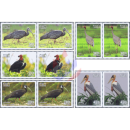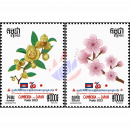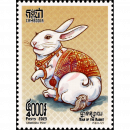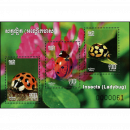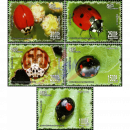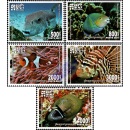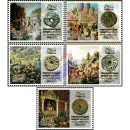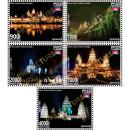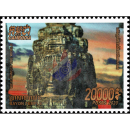Description
Opr. (5x2); A = perf. K 13; B = imperforated
Set, issue date: 09/29/2023
Picture descriptions:
dzp-dzx) ladybugs (Coccinellidae)
dzp) Red seven-spot ladybugs with aphid (Coccinella septempunctata)
dzq) seven-spot ladybugs light blue (Coccinella septempunctata)
dzr) Red seven-spot ladybugs with aphids (Coccinella septempunctata)
dzs) Asian harlequin ladybugs (Harmonia axyridis)
dzt) Red seven-spot ladybugs (Coccinella septempunctata)
dzu) Asian harlequin ladybugs (Harmonia axyridis)
dzv) Red seven-point ladybugs (Coccinella septempunctata)
dzw) fourteen-point ladybugs (checkerboard ladybird) (Propylea quatuordecimpunctata)
2785 A 1000 R multicolored dzp
2786 A 1500 R multicolored dzq
2787 A 2000 R multicolored double
2788 A 3000 R multicolored dzs
2789 A 4000 R multicolored currently
Quantity: 2,000 pieces
Designer: Cambodia Post
Printer: Vietnam Printing
Conservation Status:
Here as a "MINT NEVER HINGED (MNH)" perforated Set
Issue Notice:
- The ladybugs (Coccinellidae) are a family of hemispherical, airworthy beetles that are distributed worldwide and whose elytra usually have a different number of conspicuous spots. Many species feed on aphids and scale insects. More than 6000 species are known.
- The characteristic of the ladybugs are the symmetrically arranged dots on their elytra. They are mostly black, but there are also beetles that have light, red, or brown spots, with species having 2, 4, 5, 7, 10, 11, 13, 14, 16, 17, 18, 19, 22, and 24 spots. The points can also vary within individual species. Either the beetles don't have any, or the dots merge together in such a way that almost the entire body is black. Contrary to a widespread misconception, the number of dots does not indicate the age of the beetle, rather the number of dots is characteristic of each species and does not change during the life of the beetle. Within the close relationship of individual species (such as in the genus Coccinella), the point variations are similar.

